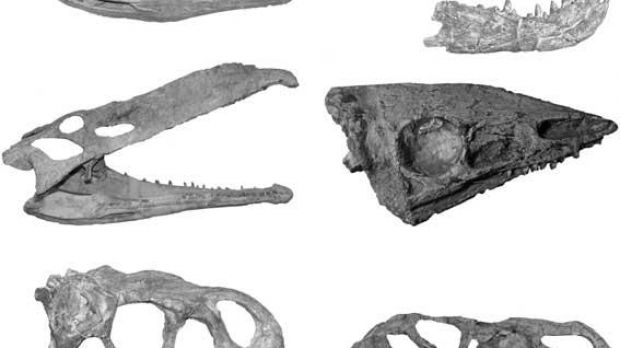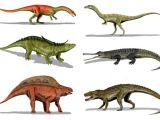A new study found out that early dinosaurs were far from being able to pose a threat for their competition; however, evolution in the planetary climate changed all that.
At the beginning of the Triassic period, the planet was inhabited by a group of ruling reptilians called archosaurs. Over the next 10 million years, this family evolved into two separate branches – the crurotarsans (the ancestors of today's crocodiles) and, well, their more famous cousins, the dinosaurs.
For about 30 million years, until the end of the Triassic, they coexisted, although not necessarily in peace. Until recently, scientists didn't even know to which of the two different species some of them actually belonged. But in fact, while competing for the same food and water resources, dinosaurs didn't really get to have a say in front of the fearsome crurotarsans such as the predator Postosuchus, the armored Desmatosuchus or the fast two-legged runners Shuvosaurus and Effigia.
In the study performed by Stephen Brusatte from Columbia University, four paleontologists built a family tree out of 64 crurotarsans and dinosaurs, based on 437 common skeletal features. What they found was that crurotarsans had outpaced dinos two times in terms of disparity (body plans), which means they had more varied body shapes and life styles. So, how did dinosaurs get to rule the Earth then?
Stephen Brusatte, also a paleontologist at the American Museum of Natural History, states that "There was this big extinction event 200 million years ago, and for some reason it hit the crurotarsans very hard. Crurotarsans survived the extinction, but they were truncated basically just to crocodiles." Indeed, a glance at the rock layers dating from the respective period reveals distinct grayish layers made of basalt that intertwine between those of red sandstone. At the layer depth pinpointed 200 million years back fossils change drastically, marking the Triassic to Jurassic transition.
This extinction event decimated crurotarsans, leaving behind the "luckier" dinosaurs. It might not be just dumb luck, but the rule that implies the survival of the fittest; either way, the important thing is that dinosaurs got to reign for another 135 million years, while from the crurotarsans only the crocodile-shaped ones still remained. Some researchers don't agree with the luck theory. Kevin Padian, a paleontologist at the University of California who didn't participate in the study claims, "Maybe dinosaurs didn't take over the world right away, but something in the end made them more successful. [They] grew faster, they had higher metabolic rates, they were bipedal, and they were presumably more alert, agile, and lightly built."

 14 DAY TRIAL //
14 DAY TRIAL // 
